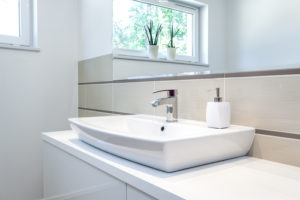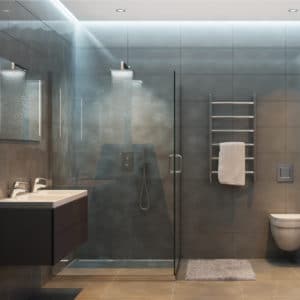Bathroom Renovation: What are the Basics?
Thinking of bathroom renovation? Are you bombarded with bathroom inspiration, choices, ideas and images all telling you what you need to create your perfect bathroom? When planning for a bathroom renovation, it is important to keep in mind both the aesthetics and the function of the space.
At Bathrooms Renovations Melbourne we strive to create a beautiful bathroom space without losing sight of the basics of bathroom renovation. A bathroom renovation is a significant investment. You want your bathroom to keep looking good and serve its basic function for many years to come.
Design
There are many tools available to help you create your bathroom design. Don’t underestimate the role of an experienced professional who will quickly determine the kind of space you have to work with, what it is you want to fit into this room, and also whether or not it will work effectively. A modern well-designed bathroom creates a feeling of space, openness and relaxation.
Function
Design needs to match function. Who is going to use the bathroom? What are their needs? What do they prefer? Minimalism is a strong design trend in bathrooms right now. Yet, in practical terms, a single basin mounted on a sleek bench top – with no cabinet or drawers underneath – cannot satisfy real-world bathroom storage needs.
Ease of cleaning and maintenance
Using larger tiles, tiling floor to ceiling, choice of toilet suite, inclusion of built-in shower niches, type of benchtop and cabinetry can all help to reduce the time spent cleaning and maintaining your new bathroom.
Tiling
The tiles you choose for your bathroom are a pivotal part of your overall look and can have a significant impact on your bathroom budget, too. With many people now choosing to tile from floor to ceiling, the cost and impact of tiling is even greater. It is important to employ a tiling expert to achieve the perfect result.
Plumbing
The plumber completes a rough in of plumbing and relocates pipes and fixtures if required. Plumbing can be relocated, however, it presents additional challenges if you are renovating in a solid brick or concrete slab house. All plumbing work needs to be completed by a licensed plumber, who is required to issue a Certificate of Compliance.
Waterproofing
This is a vital aspect of wet area renovation in order to reduce the risk of structural damage occurring as a result of dampness, water leaks, or condensation. All waterproofing needs to comply with Australian Standards (AS 3740 – 2010).
Fittings and Fixtures
The choice for your bathroom fittings and fixtures is huge. You don’t have to choose the most expensive, however, purchasing from a bathroom specialist will assist with product warranty and back up. All plumbing products need to comply with Australian standards.
A well-designed and built bathroom will serve the needs of you and your household for many years to come. Getting the basics in a bathroom right will guarantee that your bathroom experience will be continue to be hassle-free and blissful.





















